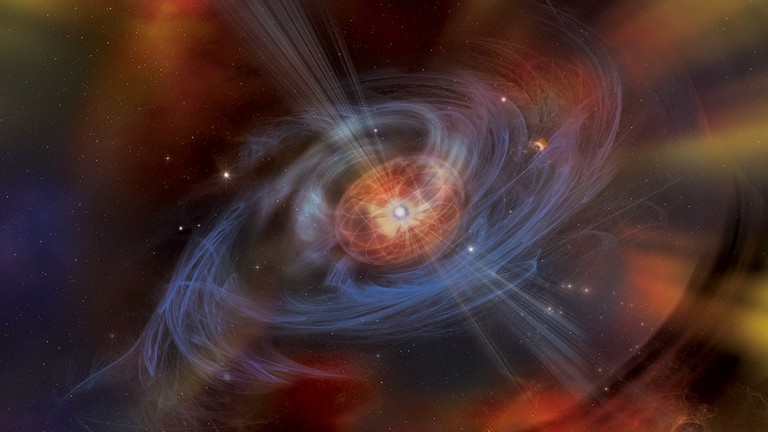A recently discovered fast radio burst turns out to be pulsing on a steady 16-day cycle, marking the first time scientists have been able to see a specific tempo from one of these mysterious signals.
What’s an FRB? They are extremely powerful radio emissions lasting only a few milliseconds. The sources of these bursts are absolute mysteries to astronomers, and of the hundreds that have been detected so far, we’ve only localized where five actually come from. Whatever event produces these emissions generates over tens of thousands of times more energy than the sun. While most FRBs are one-off signals, a few have been detected multiple times over—again, without explanation. Scientists have batted around hypotheses ranging from cosmic collisions to stellar flares to highly magnetized neutron stars to intelligent extraterrestrials (we’ll come to that).
What do we know about this FRB? It’s a repeating burst called FRB 180916.J0158+65, first detected on September 16, 2018. It comes from a massive star-forming spiral galaxy 500 million light-years away, rich in heavy metals and low in magnetism.
What’s new here: After initially discovering FRB 180916.J0I158+65, the Canadian Hydrogen Intensity Mapping Experiment (CHIME) in British Columbia began follow-up observations for 13 months, detecting 28 more bursts. The bursts arrived in four-day phases (sometimes with multiple bursts, sometimes without bursts) followed by 12 days of silence, indicating that the source producing the FRB operated on a regular 16-day cycle. The findings were reported in a new paper recently uploaded to arXiv.
The plot thickens: The fact that the FRB has an overall 16-day cycle but the four-day window varies between zero signals and multiple signals suggests the source might be orbiting a massive object of some kind (such as low-mass black hole) that perhaps stimulates or eclipses emission of the signal based on the orbital period. A separate study posits that the FRB is produced by a neutron star in a binary system with a much more massive star.
Wait, is it aliens? Almost certainly not. The signals are a sign of energetic events that are on the extreme scale of the cosmos. Even a highly intelligent species would be very unlikely to produce energies like this. And there is no detectable pattern so far that would suggest there’s a sentient hand at play.

